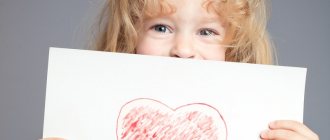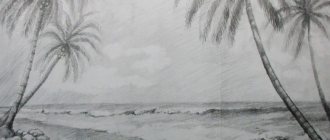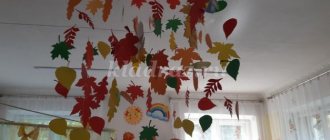MAGAZINE Preschooler.RF
Topic: “Amazing stones” Direction. Cognitive. Age: children 4 years old, middle group Integration of educational areas: “Cognition”, “Communication”, “Reading fiction”, “Artistic creativity”. Types of children's activities: play, cognitive-research, communicative, productive. Objectives: • To give an idea about stones and their properties. • Develop children's cognitive abilities and voluntary attention through experimental activities. • involve children in research activities to determine the characteristics and quality of stone (multi-colored, round, oval, sharp, smooth, rough, prickly, cold, warm, rattling, durable, strong, hard) and its benefits; • reinforce the safety rule (throwing stones is dangerous); • Teach children to independently draw conclusions based on the results of the experiment, relying on previously acquired ideas and their own assumptions. • Foster the desire to achieve good results; develop speech Planned results: Independently draw conclusions based on the results of the experiment, based on previously obtained ideas and your own assumptions. Methodological techniques: visual (use of pictures, didactic games); verbal (reminder, instructions, questions, individual answers from children); encouragement, lesson analysis Visual teaching aids. Cards for the games “Nature is not nature”, “Living - not living nature” hoops, Materials and equipment: a collection of stones, containers for experiments with water, multi-colored pebbles according to the number of children. Individual work. Develop attention and the ability to complete an experiment with Danil Sh, Leva Sh, Timur K. Vocabulary work: stones, clay, rough, wet. Structure 1. Conversation about nature, game “Nature is not nature” 2. Game “Living - not living nature” 3. Research laboratory. 4 Summary of the lessonGCD move. The teacher and children enter the group and stand in a circle on the carpet. Educator. Guys, look around, what surrounds us? (objects) And if you and I were in the forest, what would surround us? (trees, grass, flowers, insects) How can you call all this in one word? (nature) Look, on my cards there are drawn objects made by human hands and objects of nature - How can we distinguish what is nature and what is not? (in nature, everything grows, develops, and appears from another plant or animal, and things are made by man, and they no longer change themselves) We will put pictures of nature on the picture with a butterfly, and pictures of things made by man on the picture with a man. (children complete the task) Game “Nature is not nature” Guys, but nature is also different, Is grass nature? And the sun? Is the grass alive? Yes, that's right, alive, because it grows, breathes, gives seeds for new herbs. Is the sun alive? No, this is a hot star. This means that nature can be living and non-living. Let's arrange pictures with nature - put pictures with living nature in the green hoop, and pictures with inanimate nature in the yellow hoop. Game “Living and Inanimate Nature” Correct, are stones living or non-living nature? They don’t grow or move, which means they are inanimate nature. In what places are there a lot of stones? (in the sea, in the river, in the mountains)
-We will go to the laboratory again today. Let's remember what rules must be followed in the laboratory? (work carefully, take your time, don’t interfere with each other) That’s right, go to the tables. Educator: Guys, what will we do experiments with? Yes, with stones. I ask you to sit comfortably at the tables. Let's look at the stones that are on the trays of each of you.
Experiment No. 1. Determination of color and shape. Children share observations of what color their stones are (gray, brown, white, red, blue, etc.). Conclusion: stones are different in color and shape (the teacher shows an exclamation point and a diagram - a drawing, attaches it to the board.)
Experiment No. 2 Determining the size. Are all the stones the same size? - No. Find and show me your largest stone, smallest, medium. Who will make an important conclusion about the size of the stones? Conclusion: stones come in different sizes.
Experiment No. 3. Determination of the nature of the surface. We will now stroke each pebble in turn. Are the surfaces of the stones the same or different? Which? (Children share their discoveries.) The teacher asks the children to show the smoothest stone and the roughest one. Conclusion: a stone can be smooth or rough.
Experiment No. 4. Examining stones through a magnifying glass. To see the surface of the stones even better, we will use magnifying glasses. (Children look at all their stones.)
Educator: What interesting things did you guys see? (Specks, paths, depressions, dimples, patterns, etc.). Well done, very attentive children.
Experiment No. 5. Determination of weight. Guys, I have an interesting proposal for you to become a Libra for a minute. What do you do with scales? Yes, they weigh it. Children take turns holding stones in their palms and determine the heaviest and lightest stone. Conclusion: stones vary in weight: light, heavy. Experiment No. 6 Determining temperature Guys, now put your palms on the table and quickly on your cheeks. What table? And the cheeks? Our skin can quickly detect temperature. Now we will have a very interesting, very difficult experience. Among your stones you need to find the warmest and coldest stone. Guys, how and what will you do? (Children suggest methods of action, conduct experiments. The teacher asks to show a warm, then a cold stone and offers to warm the cold stone.) Breathing exercises. Children take all the stones, place them on their palms, inhale through their nose, and exhale through their mouth, lips with a tube (3 times). Conclusion: stones can be warm or cold.
Experiment No. 7 Stones sink in water. The teacher asks: “Guys, what do you think will happen to the stone if you put it in water? (Children's versions.) Why do you think so? (Children's arguments.) What needs to be done to find out the truth - the truth? (Children's suggestions.) Children take a glass of water and carefully place one stone in the water. They are watching. Share the results of the experience. The teacher draws attention to additional phenomena - circles appeared in the water, the color of the stone changed and became brighter. Conclusion: stones sink in water because they are heavy and dense. (Children take out a stone and wipe it with a small napkin.)
Educator. Let us now be builders. And we will build walls for the house from stone. The children try to build walls out of stones, but they crumble. Educator. The stone is so hard that it is very difficult to give the desired shape to the walls and fasten the stones to each other. Clay came to the rescue. You can build and sculpt from raw clay, and you can fasten stones together. Lesson summary: What did we do today? What do you remember most? Would you like to do some more lab work? Educator: Guys! Please look at the board. We ended up with an unusual letter about stones. Writing in drawings and diagrams. Who wants to become a scientist, put on a bachelor's cap and make an important conclusion about the properties of stones?
| Next > |
Gems and kindergarten
I usually read a book to the children first, and then we do creative work based on it. The formula is simple: read - get interested - realize (creative potential and new knowledge). With this new product it was the other way around. We went for a walk this morning and took some paints with us. Primary colors. Fingerprints and gouache. Finger paints have a special consistency; not all children like it. Gouache has good density and the colors are richer. That's why we paint with it both without brushes and with them. It is not so convenient to draw with water on the street - you need to change it often... Therefore, in the process of drawing with our fingers, we use wet wipes: if we want to take a new color, we wipe our hand with a napkin. Even the kids are used to it, just make sure you give them napkins...
Endpaper with stones
From ordinary sheets of paper I cut templates of various multifaceted, pointed shapes - like large precious stones. And the people went to paint their stones, create unique colors and combinations of shades. Now look at the title photo around the book - these are all children's “jewels”.
From fire and lava
And then we sat down in a cool room, I removed the protective film from the book - this also amazed our children: “No one has read this book before us?!” Indeed, no one read it. Together we made a discovery - in every way!
As in the entire series by Dianna Aston and Sylvia Long (we have already written about The Egg Loves Silence), the book The Stone Has Its Own Story has wonderful illustrations. They help kids understand text that is not always simple.
Heavenly stones
So we learned that some of the stones are from the bowels of the earth - cooled lava. Another part are celestial aliens.
I remember our Anton still had a “curious” period with questions: “Who salted the sea?” and “Why is there so much sand on the beach? Where does it come from?!” This is just the answer to the question about sand...
History of grains of sand
Lapis lazuli was completely impressed by our mini-club “What? Where? When?"! Experts suddenly began to remember that my mother also had precious stones in her household. Some threatened to bring it into the garden - to show it!
Lapis lazuli recipe
It turned out that the stones are not only beautiful, but also useful: you can use them to crack nuts or simply dive with stones in your belly - for weight - like a crocodile! And there’s nothing to say about the first examples of rock art...
Helping stones
Secrets of the stone
Art in stone
The stone has its own history
Bright book. With a spread about the most famous ancient buildings made of stone. One of the spreads at the beginning of the book is with a scattering of stones (photo above), but without names. And at the end of the book - the same - but with titles. You can play memory games and guessing games...
For curious children and restless parents! After reading and looking at it, I immediately want to go in search of treasures!
The stone has its own history. Diana Aston. Sylvia Long. Mann, Ivanov and Ferber. 2015
Text and photos - Irina Khmelnitskaya
Robot out of the box
Great buildings: architecture for children and parents
Books for little Egyptologists
Story Cubes - stories in cubes - games for developing speech and imagination
HABA - toys from Germany
How to photograph a child
Creative project “What the stones say”
- April 3, 2014
Conference “Project activity in an educational institution - 2014”
Nomination “Pedagogical project in a preschool institution”
I tried to find an interesting educational topic, to create conditions for understanding the ways of active interaction of children with inanimate nature and the ancient world history of stone sculptures, the ethnic culture of our region.
We live in a small, beautiful taiga town where iron ore is mined; in fact, we are walking through treasure with our feet. Every time we walked with the children and found different interesting stones, we collected them and brought them to the group, and this is how we got a collection of stones. But over time, it grew into a mini-museum of the history of ancient stones - megaliths, menhirs of Khakassia.
Goal: Creating conditions for the formation of prerequisites for search activities through the implementation of the mini-museum project “What the Stones Say.” Introducing children to the culture of the Khakass people with menhirs, the variety of stones in nature, their features, properties, meaning and use by humans through play and experimental activities.
Tasks:
- Develop research skills. Develop the ability to identify the materials from which stone products are made.
- Enrich the vocabulary of preschoolers.
- To form moral and patriotic feelings for the native land, pride in the cultural and historical heritage.
- Foster a caring attitude towards natural resources.
- To develop interest in objects of inanimate nature and in experimental activities with them.
The first stage is preparatory.
Studying literature, familiarizing with Internet resources, developing a long-term plan. Working with parents.
The second stage is practical.
We collected exhibits for a mini-museum and attracted teachers and children from other groups. Joint activities were carried out through the integration of educational areas. Organization of an exhibition of books: encyclopedias, fiction on the topic of the project. Design of photo albums: “What kind of stones are there”, “What are the stones talking about”. Compilation of the literary collection “Tales of Stones”. Production of attributes for role-playing games.
The third stage is the creation of a mini-museum.
- Design of a mini-museum.
- Presentation of mini-museum exhibits to children of other groups.
The fourth stage is generalizing.
- Creation of an electronic photo album.
- Design of the project and its presentation at the pedagogical council.
As a result of working on the project, the children’s cognitive activity increased. They learned about the properties of stones, their features, meaning and use by humans, about the mineral resources of Russia and Khakassia. The children got acquainted with the culture and way of life of the Khakass people, found out that the Khakass created menhirs for ritual ceremonies and treatment for various ailments. The vocabulary of preschoolers has expanded, the children have learned to look for answers to questions of interest on their own. The degree of parental participation in the life of the group has increased.
Conditions of implementation. This project is carried out on the basis of the MBDOU “TsRR - DS “Dolphin” in a preparatory group for school under the guidance of the teacher of this group. The project is implemented in the joint activities of children, teachers and parents, as well as in the independent activities of each project participant.
Project type: creative, group.
Duration: 4 months.
Appendix: Creative project “What the stones say.”
Author: Nina Vladimirovna Zolotukhina, teacher of the highest qualification category, Child Development Center - Kindergarten "Dolphin", Abaza, Khakassia.
Card index of experiments with stones; experiments and experiments on the surrounding world (senior group) on the topic
Card index of experiments “Stones”
Experiments with stones Developed by: Boltalina O.V.1. What types of stones are there? Goal: to form an idea of the variety of appearance of stones, the properties of stones, to teach classification according to different characteristics. Materials: various stones, magnifying glasses. Course of experiment. Expected answers from children. Will you look at the stones carefully? What are they? Different. Big and small. Beautiful. Which stones do you like best? Find the most beautiful stones for you. Justify your opinion. Smooth and colorful. It has stripes on it. Round and small. Close your eyes and select the smoothest round pebble by touch. Look at it carefully. Do you know what it's called? This sea stone is called pebble. Why do you think it doesn't have sharp corners? Have there been before? I suggest taking a few pebbles in your palms and shaking them. What do you feel? Children choose a stoneChildren find it difficult to answer
How they knock. Why do they knock? Because we shake them. What happens to them at sea? (And what force shakes them in the sea?) They knock and fight there. By the power of water Water moves stones, pushes them against each other, and they rub against the sand. The sharp corners gradually grind down, the pebbles become round. Close your eyes and place your palms in front of you. (Places small rough pebbles in the children’s palms) How do you feel? What do the stones feel like?
Not smooth. Uneven, scratched. How do these stones differ from sea stones? Not smooth, sharp, rough. Lay out the stones in two rows: from large to small, from rough to smooth. Examine the pebbles through a magnifying glass. What do you see? Cracks. Patterns. What have we learned new about stones? Stones can be small and large, smooth and rough, colored and transparent, warm and cold.
2. Hard stone Purpose: To form an idea of the hardness of a stone Materials: pebbles, plasticine, coins Progress of the experiment Expected answers from children Take pebbles in one hand and plasticine in the other. Squeeze both palms together. Compare what happened to the pebble and what happened to the plasticine. Why? The plasticine is crumpled, but the pebble is not, because it is hard. Tap the lump of plasticine on the stone, two stones against each other. What is the difference? When they knocked with clay on a pebble, nothing was heard and the plasticine was washed, but when with two pebbles, a knock was heard and the stones did not wrinkle. Why do you think the noise was heard when pebbles were knocked on pebbles? Because the stone is hard, and the plasticine is soft. Scratch something on the stone with a coin. What happens? I can not see anything. The stone is very hard. Why do they say “hard as a stone”, “stands like a stone”? The stones are hard.
3. Sinking - not drowning Goal: to form ideas about the properties of a stone Materials: Sea pebbles, pieces of granite and pumice, transparent vessels with water. Course of the experiment Expected answers from children Children, what do you think will happen if you put a stone in water? He will drown. Throw a stone into a vessel of water and watch what happens to it. Drowned Can a stone float? No, take granite and pumice. Compare them by weight. Are the stones the same weight? No, one is light, the other is heavy. What will happen to each of them if you put them in water? They will drown. Let's check if this is true: put granite and pumice in water. What happened? The pumice did not sink, the granite did. Why do you think? Because pumice is light. There are a lot of holes in it. And in the holes there is air and air bubbles prevented her from drowning. Pumice has many holes in which air accumulates, so it is light and does not sink.
4. Can a stone make sounds? Purpose: to form an idea of the properties of a stone Materials: various stones Progress of experiment Expected answers from children Children, do you think a stone can make sounds? Maybe How can we check this? Knock pebbles Knock different pebbles against each other. Are the sounds that are produced similar? No. Heavy stones make a loud sound, small ones make a thin sound, and light ones make a quiet sound. Stones make sounds when they rub or come into sharp contact with each other. Different stones make sounds that are not similar to each other.
5. Do stones change color? Purpose: to form ideas about the properties of stones. Materials: empty containers, watering cans with water, stones. Course of experiment Expected answers from children Children, do you think stones can change color? No. Invite the children to put a stone in a container and fill it with water. Then touch the stones by feeling them in the water and pull the stones out of the water. What has changed? Compare stones by color: wet stones and dry ones. They became dark. Which of them is more beautiful? Wet. What conclusion can be drawn? Wet stones change color
6. Drawing stones Goal: to form ideas about the properties of stone. Materials: small sheets of plywood, chalk, coal. Course of experiment. Expected answers from children. Remember with the children what you can use to draw, for example, on asphalt. Which stones are best to draw on plywood: chalk or coal? Chalk Let's try to do this. Children draw on a plywood board with chalk and charcoal. What is the best way to draw? Why? It's better to draw with chalk because it's soft, but charcoal is hard - it scratches. Offer children a variety of stones for independent experimentation: pebbles, pumice, brick, coal Formulation of conclusions
7. Warm pebble Goal: to form an idea of the properties of the stone. Materials: lamp (sunny weather), pebbles of different colors (there must be a black stone) Progress of the experiment Expected answers from children Touch different stones and tell me, are they cold or warm? Cold Hold the stone in your fist. Has it become warmer? A little bit Why do you think? Our hands are warm. Take a white and black pebble and hold it under the lamp. (leave it in bright light) The pebbles became warm. Which stone became warmer? Black Why was the black stone the warmest? Children find it difficult to answer Black color absorbs the sun's rays. Therefore, the black stone heated up more than the white one. Remember, what clothes make us hotter in the summer?
In black
8. Light - heavy Goal: to form ideas about the properties of stone Materials: pebbles of different densities and sizes, scales. Course of experiment Expected answers from children Children, do you think it’s fashionable to look at stones and say which one is the heaviest? Can. The largest one will be the heaviest. And if you take pebbles of the same size, will they be equal in weight? So? Difficult to answer. Let's check. How can we do this? Take it in your hands Take pumice in one hand - a porous stone, in the other - a dense one of the same size. Which one is heavier? Why? Pumice is lighter because it has many holes; a dense stone has no holes, it is heavy. What do you think, if you take a large porous stone and a small dense one, which one will be heavier? Dense will be heavier Exactly? How else can we find out the weight of the stone. Exact weight? Using scales (children weigh stones on scales) Children, what conclusion can be drawn? Stones have weight. The weight of a stone sometimes does not depend on its size.
9. Durable stone Goal: to form ideas about the properties of stone Materials: stones of different densities, hammer The teacher suggests breaking the stones with a hammer One stone broke, but the other did not Which stone was easier to break The chalk we used to draw with, pieces flew off from it. Pumice is porous. What stone couldn’t be broken? Granite, pebbles Why? It is dense and heavy. Which of these stones is stronger? Granite and pebbles are stronger than chalk and pumice. Which of the stones that we looked at earlier are strong and which are less durable? Assume Marble is durable, limestone is not. What property of stone did we learn today? About strength





